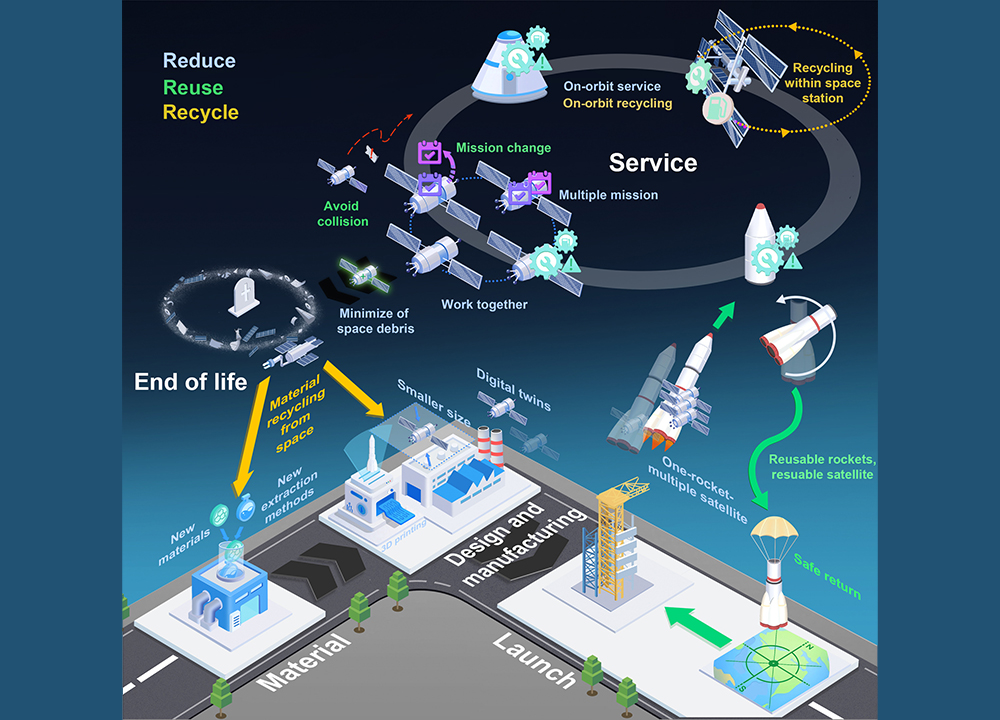If mechanical systems and the weather cooperate, July 8 will bring the 135rd and final mission of the American Space Shuttle program (STS-135). Coincidentally, I recently received a charming biography of the late Robert M. Beasley, the man who led the team that developed the shuttles’ high-temperature reusable surface insulation tiles.
I think for those of us in the ceramics field, the shuttle tiles grabbed our attention because they are one of the most visible-yet-awesome things we could show to outsiders to explain what high-tech ceramic materials are and do. The tiles have been, and will continue to be, a fixture in the various materials science demonstration kits used for outreach to grade school, high school and college students. Inevitably, the personal, science, engineering and business stories behind the shuttle tiles have grown foggier over the past 35 years, especially as the end of orbiter program has neared and more of the men and women responsible have retired and died.
But fortunately for us, Gloria Beasley Lausten’s “The Shirtsleeve Invention: The Story of a Man and an Idea” captures much of the thinking, emotion and technical achievement of her husband’s group, which conceived and prototyped the tiles for then-Lockheed Missiles & Space Company, and eventually won the NASA contract for all of the shuttles’ thermal protection systems.
The author and her husband, who died in 1997, preserved a great collection of diaries, notes and documents from the 1951-1991 period, when Beasley began as a research chemist at Corning. She follows his move to LMSC and his early concepts and development of “integrated filament reinforced thermal protective and structural materials ‘tailored’ to mission requirements” and finally to see oversee their installation and successful performance on the fleet of orbiters.
The book is highly readable for even non-materials scientists and engineers, especially the technical personnel’s view of the high-stakes competition that was waged between LMSC, Rockwell, GE, Martin-Marietta and others to select which company would build the systems and subsystems for the orbiter. The author makes frequent and appropriate use of stories and descriptions Beasley provided in a series of audio tapes he recorded in 1994 in a conscious effort to leave an accurate account of the history of the work on the tiles.
It is easy to forget that very early days of shuttle development, there was a great deal of concern about whether the LI-900 (which stood for lightweight insulation, 9 pounds per cubic foot) and heavier-but-stronger LI-2200 (22 pounds per cubic foot) would work as advertised or would even remain attached to the orbiters’ shell. It’s worth remembering that in the beginning there was some fear that if one tile detached (the adhesion systems weren’t tasked to Beasley’s team), it could lead to the “unzipping” and catastrophic detachment of many others.
In the book, Beasley Lausten recounts the pride that members of The American Ceramic Society felt when the first shuttle completed its mission in April 1981. She even includes a column written by James I. Mueller then president of ACerS and principle investigator on a NASA ceramics research grant at the University of Washington, that appeared in a 1981 issue of Society’s Bulletin. Mueller, himself sometimes credited with development of the TPS, had championed Beasley’s development of the LI tiles, and noted in the magazine
“The successful landing of the Space Shuttle Columbia on April 14th ended almost ten years of worldwide media coverage on the ‘trials and tribulations’ of the Space Shuttle. Seldom, if ever, have ceramic materials had such visibility, albeit often negative. The end result was gratifying not only to those directly involved but also to the ceramic community in general. … The mid-1960s development of a lightweight materials made of silica fibers must be credited to Bob Beasley. At the time, the reusable space vehicle was only a concept and the insulation material had other potential applications. By 1970 the initial designs of the shuttle had reached a point where both metallic and ceramic materials were being considered for the outer surface. In the final analysis, the silica-fiber tile was selected.”
Beasley won many awards and honors for his work. However, he was often rankled by NASA’s culture and LMSC’s demands, and many of these conflicts are revealed in the book, and provide ample color and tension to grip the reader.
Tragically, Beasley developed major heart problems while still in the prime of his career and had a major stroke in 1977 at age 51. Although he still had ideas for even lighter weight TPS approaches (e.g., using hollow silica fibers), the stroke robbed him of his eyesight, mobility and ambition, thus effectively ending his career in engineered ceramics. He died during a heart procedure in 1997.
Surprisingly, Beasley’s formal education wasn’t extensive; he earned a B.S. in chemistry from Stetson University in Florida. One of his co-workers, Harry Nakano, credited much of Beasley’s success and vision to his early training in ceramics research at Corning. Nakano also praised his leadership and ingenuity, recalling Beasley as, “a great problem solver, finding simple solutions to seemingly complex problems. These attributes would serve him well. But most of all, his conviction that a highly purified fibrous silica material could be used as a heat shield or insulation on a spacecraft or missile was what drove him to eventually invent the LI-900 material. Normally, only a Ph.D. type researcher would undertake such a project.”
As the 2003 disaster of the Columbia orbiter showed, the shuttle’s mission was only possible with a rugged TPS. As the Atlantis comes in for the final landing next month, consider reading the story of one of the people that made the shuttle technology possible. For information about obtaining the book, see theshirtsleeeveinvention.com.
CTT Categories
- Aeronautics & Space
- Basic Science
- Glass
- Material Innovations
- Refractories


